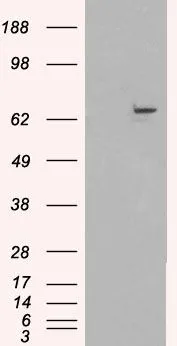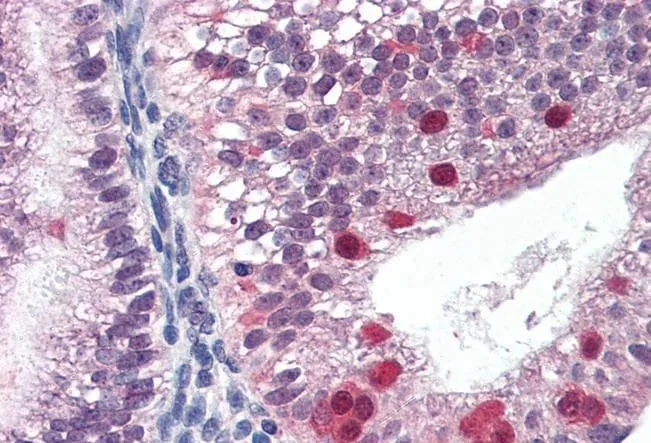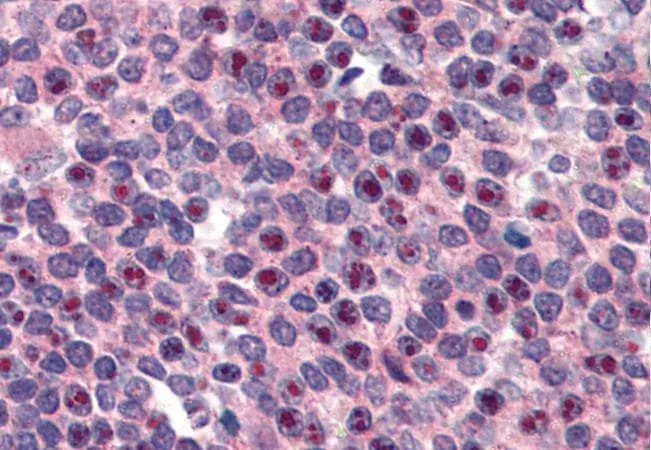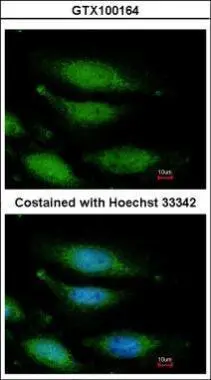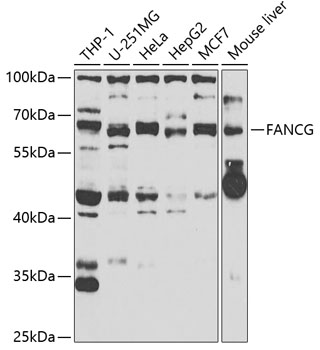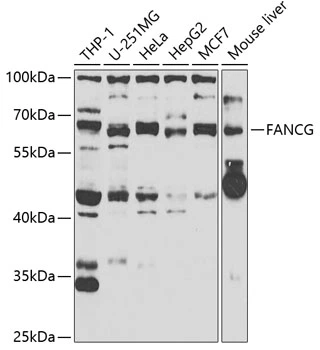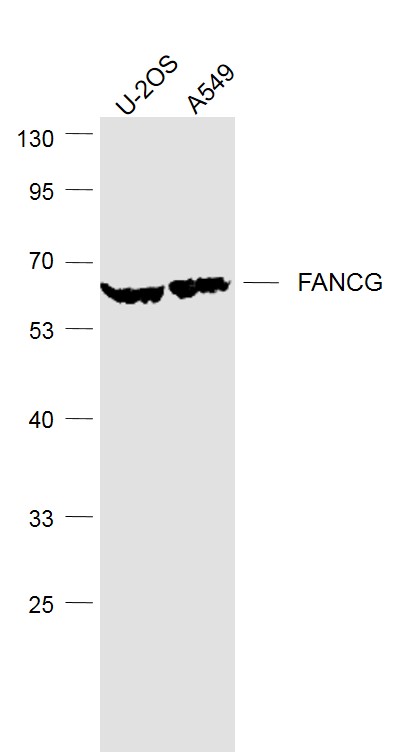
WB analysis of Jurkat nuclear lysate using GTX89053 FANCG antibody, C-term. Dilution : 1μg/ml Loading : 35μg protein in RIPA buffer
FANCG antibody, C-term
GTX89053
ApplicationsWestern Blot, ImmunoHistoChemistry, ImmunoHistoChemistry Paraffin
Product group Antibodies
ReactivityHuman
TargetFANCG
Overview
- SupplierGeneTex
- Product NameFANCG antibody, C-term
- Delivery Days Customer7
- Application Supplier NoteWB: 0.3-1microg/ml. IHC-P: 3microg/ml. *Optimal dilutions/concentrations should be determined by the researcher.Not tested in other applications.
- ApplicationsWestern Blot, ImmunoHistoChemistry, ImmunoHistoChemistry Paraffin
- CertificationResearch Use Only
- ClonalityPolyclonal
- Concentration0.50 mg/ml
- ConjugateUnconjugated
- Gene ID2189
- Target nameFANCG
- Target descriptionFA complementation group G
- Target synonymsFAG, XRCC9, Fanconi anemia group G protein, DNA repair protein XRCC9, Fanconi anemia complementation group G, X-ray repair complementing defective repair in Chinese hamster cells 9, X-ray repair, complementing defective, in Chinese hamster, 9
- HostGoat
- IsotypeIgG
- Protein IDO15287
- Protein NameFanconi anemia group G protein
- Scientific DescriptionThe Fanconi anemia complementation group (FANC) currently includes FANCA, FANCB, FANCC, FANCD1 (also called BRCA2), FANCD2, FANCE, FANCF, FANCG, FANCI, FANCJ (also called BRIP1), FANCL, FANCM and FANCN (also called PALB2). The previously defined group FANCH is the same as FANCA. Fanconi anemia is a genetically heterogeneous recessive disorder characterized by cytogenetic instability, hypersensitivity to DNA crosslinking agents, increased chromosomal breakage, and defective DNA repair. The members of the Fanconi anemia complementation group do not share sequence similarity; they are related by their assembly into a common nuclear protein complex. This gene encodes the protein for complementation group G. [provided by RefSeq, Jul 2008]
- ReactivityHuman
- Storage Instruction-20°C or -80°C,2°C to 8°C
- UNSPSC12352203

